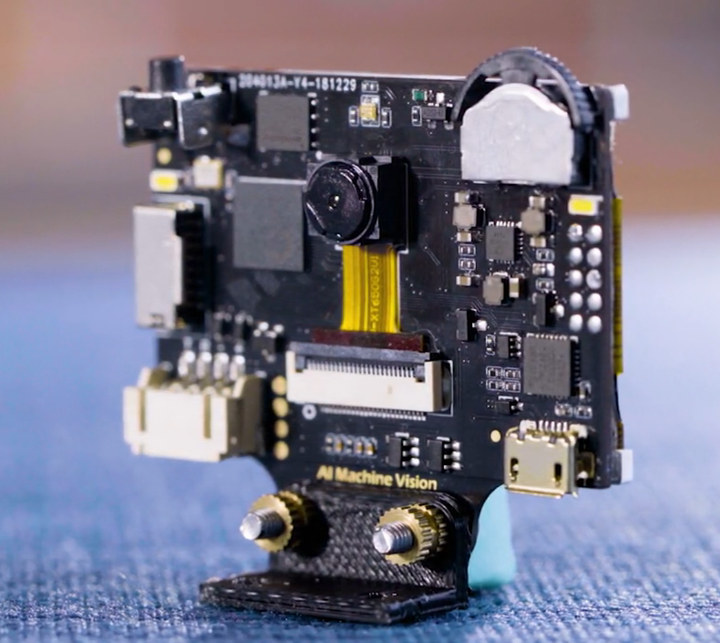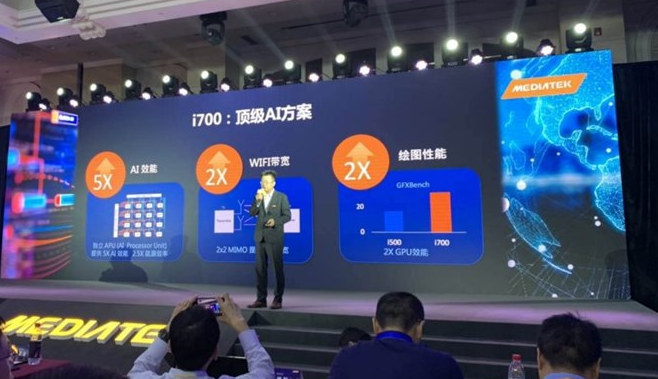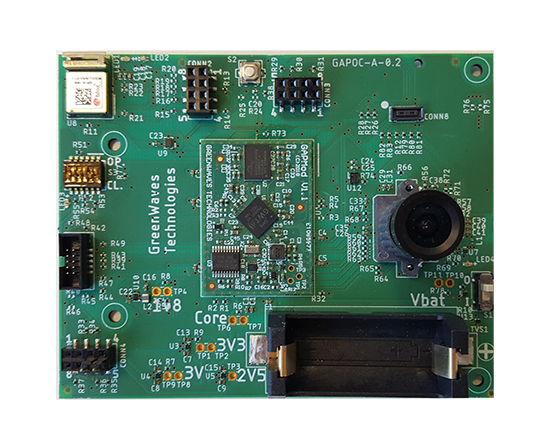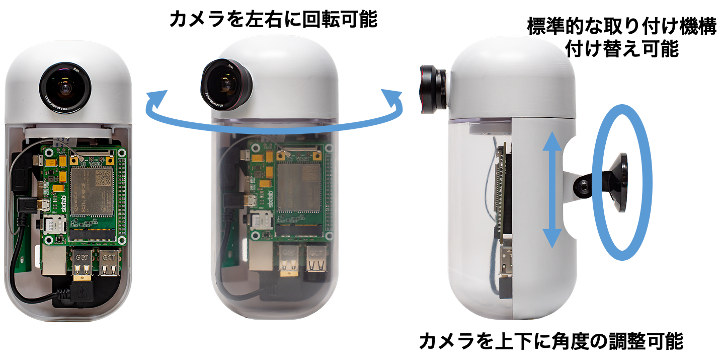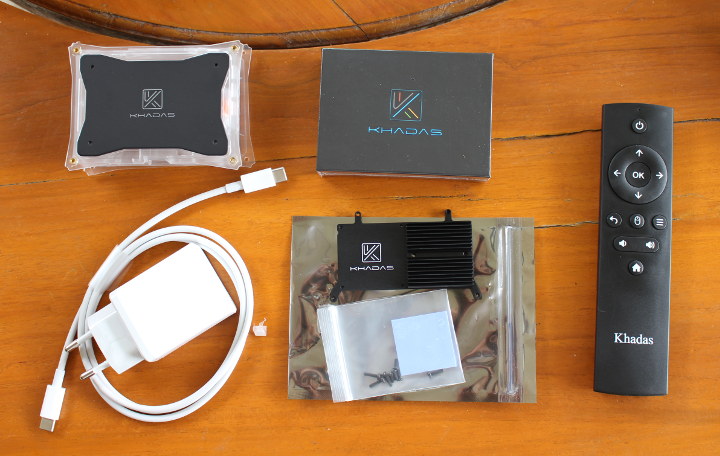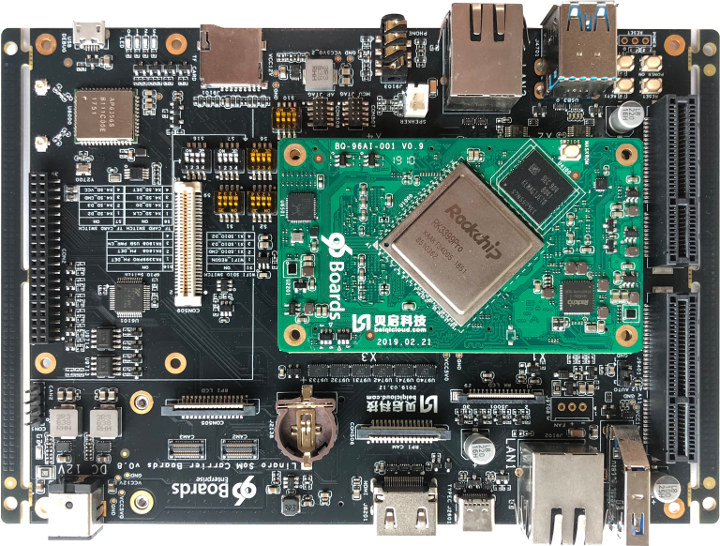A couple of years ago, I reviewed JeVois-A33 computer vision camera powered by Allwinner A33 quad-core Cortex-A7 processor running Linux. The tiny camera would implement easy-to-use software for machine vision with features such as object detection, eye tracking, QR code and ArUco marker detection, and so on. The camera could handle the tasks at hand, but since it relied on purely software computer vision, there were lag for some of the demo applications including 500ms for single object detection, and up to 3 seconds for YOLO test with multiple object types using deep learning algorithms. That’s a bit slow for robotics project, and software solutions usually consume more than hardware accelerated ones. Since then, we’ve started to see low-cost SoC and hardware with dedicated hardware AI accelerators, and one of those is Kendryte K210 dual-core RISC-V processor with a built-in KPU Convolutional Neural Network (CNN) hardware accelerator and APU audio […]
Alibaba Unveils XuanTie 910 16-core RISC-V Processor
When Pingtou Ge (Brother Pingtou) Semiconductor Co. was founded by Alibaba in September 2018, the vision was to create groundbreaking chips for production. The company had once been Zhongtianwei, a chip company, which was acquired by Alibaba in April 2018 along with team Aha. On July 25, 2019, it was announced that Brother Pingtou had released the XuanTie 910 (Black Iron 910) 16-Core RISC-V Processor. The company has reported that the processor will be integrated into high-performance end to end 5G chips, AI, and autonomous driving applications. There are conflicting reports that the processor is also known as T-Head, although its name means Black Iron. There has been no firm release date or price as of yet. Open-source technologies are being adopted on a regular basis in China, and the XuanTie 910 is being offered to developers with encouragement to use Berkeley-based open-source ISA with very few intellectual property restrictions. […]
Arm Techcon 2019 Schedule – Machine Learning, Security, Containers, and More
Arm TechCon will take place on October 8-10, 2019 at San Jose Convention Center to showcase new solutions from Arm and third-parties, and the company has now published the agenda/schedule for the event. There are many sessions and even if you’re not going to happen it’s always useful to checkout what will be discussed to learn more about what’s going on currently and what will be the focus in the near future for Arm development. Several sessions normally occur at the same time, so as usual I’ll make my own virtual schedule with the ones I find most relevant. Tuesday, October 8 09:00 – 09:50 – Open Source ML is rapidly advancing. How can you benefit? by Markus Levy, Director of AI and Machine Learning Technologies, NXP Over the last two years and still continuing, machine learning applications have benefited tremendously from the growing number of open source frameworks, tools, […]
MediaTek i700 Cortex-A75/A55 AI Processor to Power Automated Stores, Facial Recognition Applications
MediaTek has recently unveiled their i700 octa-core AI IoT Platform, which succeeds their little known MediaTek i500 (MT8385) processor, and features two Cortex-A75 cores, six Cortex-A55 cores, coupled with MediaTek APU 2.0 comprised of a dual-core AI processor, AI Accelerator and AI face detection engine that is said to offers 5x greater performance than the i500.. The new SoC also features an Imagination 9XM GPU clocked at 970MHz, as well as a tri-core ISP with support for a single 32MP camera or a 24MP+16MP dual-camera setup. MediaTek i700 key features & specifications: CPU – 6x Arm Cortex-A55 cores @ 2.0 GHz, 2x Arm Cortex-A75 cores @ 2.2 GHz GPU – Imagination PowerVR 9XM-HP8 (GM9446?) GPU @ 970 MHz MediaTek APU 2.0 AI engine – Dual-core AI processor, AI Accelerator, AI Face Detection Engine; Neuropilot SDK support Memory – Up to 8GB LPDDR4x, 1866MHz Connectivity Cellular – Carrier Aggregation (CA), CDMA2000 […]
GAPPoc AI development boards based on the GAP8 RISC-V Chip
GreenWaves has developed a development board based on the GAP8 chip which can be evaluated from a GAPuino board, a generic board that can run off a low power external power source or USB and is compatible with the Arduino ecosystem. Recently the company moved beyond the generic board to the GAPPoc, platform which stands for GAP8 Proof of Concept. The GAPPoc is focused on a class of applications which can be embedded on a single board and able to carry hardware such as crystal or external memory, sensors, a radio fit, and a battery. The board will be geared towards a set of low power functions for a particular class of applications. This is a family of boards designed to increase the range of abilities in edge Artificial Intelligence. At this time there is only a single board with a platform to enhance AI, targeting Computer Vision in the […]
S+ Camera Basic Combines Raspberry Pi 3 Board and LTE Shield for Edge Applications
Soracom is a company that provides global IoT network cellular connectivity for businesses in smart IoT agriculture, energy, consumer, manufacturing, transportation, and medical industries, and even provides free IoT SIM cards for evaluation (US/Canada only). The company has just announced the S+ Camera on its Japanese blog. The camera looks to features several off-the-shelf components including a Raspberry Pi 3 board and SixFab Raspberry Pi 3G-4G/LTE Base Shield V2 connecting to Soramcom network. It’s a little confusing as to why a cellular IoT company would develop an LTE camera since streaming video requires bitrates not normally associated with IoT. The blog post does provide a few more details however, as S + Camera is said to run SORACOM Mosaic software which enables “algorithms for edge processing cameras and management and operation of cameras”. That means it’s quite possible the video will not be streamed, but edge processing/computing usually means AI is […]
Khadas VIM3 Review – Part 1: Kit Unboxing and Assembly
We started to read about Khadas VIM3 in May of this year as an Amlogic S922X development board with an M.2 socket for NVMe SSD, and 802.11ac WiFi 5 & Bluetooth 5.0 wireless module. Eventually, Shenzhen Wesion decided to change the processor to Amlogic A311D before the launch last month, since it does not cost much more, but includes a 5.0 TOPS neural processing engine. The company has sent me a Khadas VIM3 kit for evaluation and review. Before going through the software part, and especially the tools for the NPU which will be one of the highlights of the board, I’ll check out what I received today, and show how to assemble the kit. Khadas VIM3 Kit Unboxing The package is rather boring… But what’s really important is what’s inside… We’ve got an enclosure, a smaller package with the board itself, a USB-C power supply, a thermal pad + […]
96Boards RK1808 & RK3399Pro SoM & Devkit Now Available for Purchase
Back in April, we covered the very first 96Boards SoM’s (Systems-on-Module) which were based on Rockchip RK3399Pro or RK1808 processors, and targeted applications leveraging artificial intelligence acceleration. There were not quite available at the time, but Seeed Studio now has both BeiQi modules for pre-order for $119 and $59 respectively, while the carrier board goes with $125 with antennas, and power supply. Note that the RK3399Pro SoM and the carrier board are basically available now with shipping schedule for July 4th, but you’d had to wait until the end of the month for the RK1808 module. BeiQi RK1808 AIoT 96Boards Compute SoM Module specifications: SoC – Rockchip RK1808 dual-core Arm Cortex-A35 processor @ 1.6 GHz with NPU supporting 8-bit/16-bit operations up to 3.0 TOPS, TensorFlow and Caffe frameworks; 22nm FD-SOI process System Memory – 1GB LPDDR3 (I also read “4GB LPDRR3” (sic.) in other places, but the capacity is likely […]


